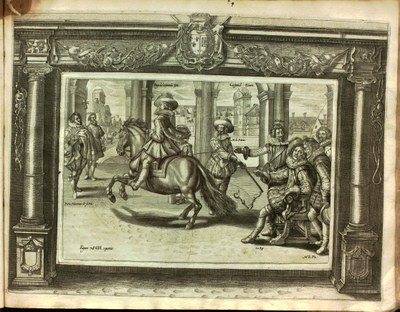Riding lessons – A Vital Aspect of Noble Education

During the Early Modern period, riding was a key ingredient of a nobleman’s education. Good horsemanship (including dressage) was essential in order to survive at court and in military service. There was a particular demand for vaulting, skills specially required for tournaments. Antoine de Pluvinel, the riding instructor of the future King Louis XIII, elaborated a theory of riding. It was posthumously published in a book that included a number of representative engravings and became one of the most successful books of its kind in the early modern period. The example shown here illustrates, for example, how a page of the royal stables performs a routine before the king, as Pluvinel explains it to him.
Crispijn van de Passe (1594-1670) Figure 7.8. GH, 1 part, copper engraving, 1626, source: Pluvinel, Antoine de: Maneige Royale [...]. Die Königliche Reitschuel [...], Braunschweig, 1626, image 33, digitized: Universitäts- und Landesbibliothek Sachsen-Anhalt, http://vd17.bibliothek.uni-halle.de/pict/2007/3:315740C/.